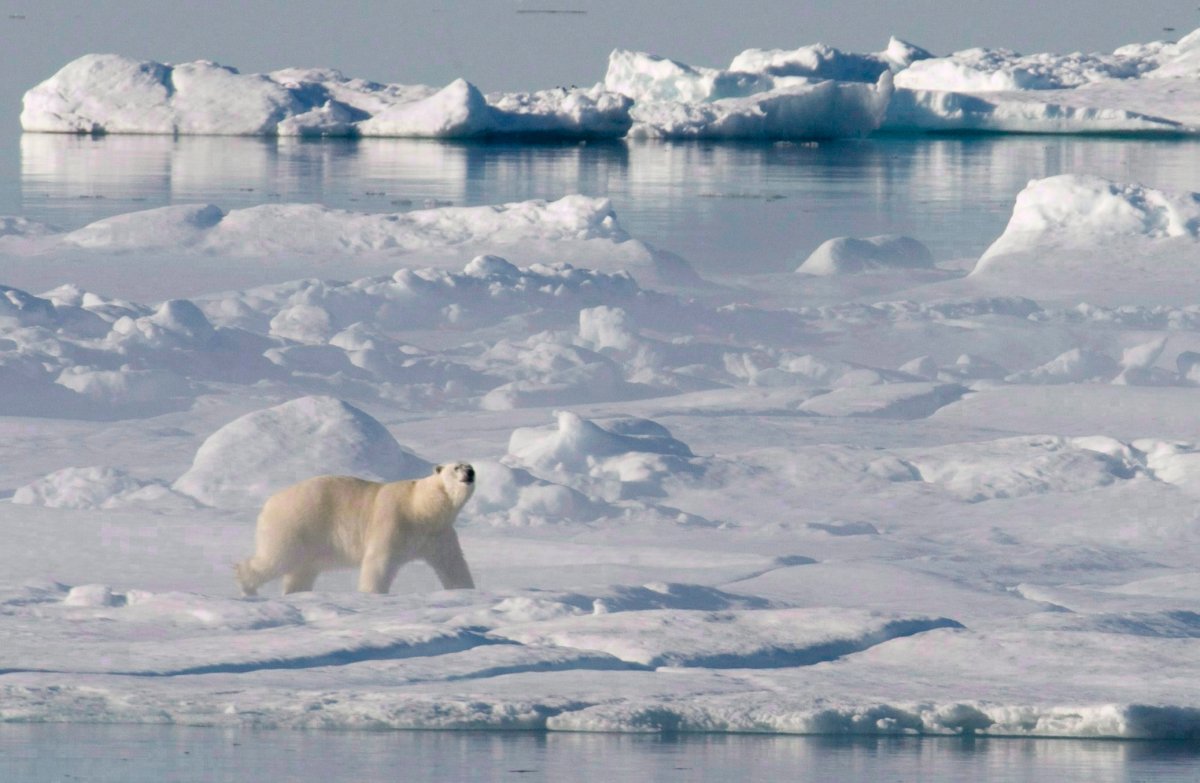Polar bear scientists have developed a new way to study the mighty Arctic predator – pulling DNA off footprints left in the snow.

Fingerprinting a footprint could fundamentally change how researchers work with the bears by making it easier, cheaper and safer to study an animal that has become politically charged in the debate around climate change and Arctic development.
“This method allows us to sample DNA from the animal without having to see the animal,” said Eva Bellemain of Spygen Inc., the French company that created the technique, used for the first time on polar bears from Arctic Norway.
The technique couldn’t be more straightforward. Using radio-collar data, scientists look for bears and when they find imprints that they’re sure come from the same animal, they scoop the tracks and the snow into a plastic bag.
“People don’t realize it, but when you touch something you leave some cells,” Bellemain said. “It’s invisible.
“Especially if the snow is a bit hard, the bear will leave some cells from the skin from under the foot.”
Snow and cold are good preservatives for DNA, Bellemain added.
READ MORE: Argentina zoo rejects moving polar bear to Canada despite activists’ concerns
The snow is later melted and filtered. A minute amount of genetic material is left in the filter, which is treated with chemicals that make it easier to read the DNA.
So far, the method can only confirm what species the DNA came from. However, Bellemain said that the ability to identify individual bears is near.
“We’ll get some results by the end of the year,” she said. “Maybe the method will be available to use by the beginning of the year.”
That would allow scientists to know the gender of an animal, analyze its parentage, get an idea of the structure of the population it came from and suggest the size of territory and resources it uses – all from a footprint.
“This would be a huge boon to the type of work that many of us do for population monitoring,” said Andrew Derocher, a polar bear biologist at the University of Alberta.
Polar bear populations have become part of several ongoing political debates, including the impact on the animals of Arctic sea-ice melt, sport hunting and industrial development. Some populations remain poorly understood because of how expensive and hard it is to do aerial surveys or other counts.
“It would take nothing to scoop up snow from 20 or 30 tracks from a polar bear,” Derocher said. “You can do this type of analysis very quickly and cheaply.”
READ MORE: Young Ottawa conservationist helps with Winnipeg polar bear training
Hunters could be asked to scoop a few tracks from any bear path they happen to cross, Derocher suggested.
“The big challenge in this DNA work is the quality of the DNA you get.”
But the method could be a big step forward in the quest for non-invasive ways to study animals, said Derocher.
“It is potentially an incredibly important development.”

Comments